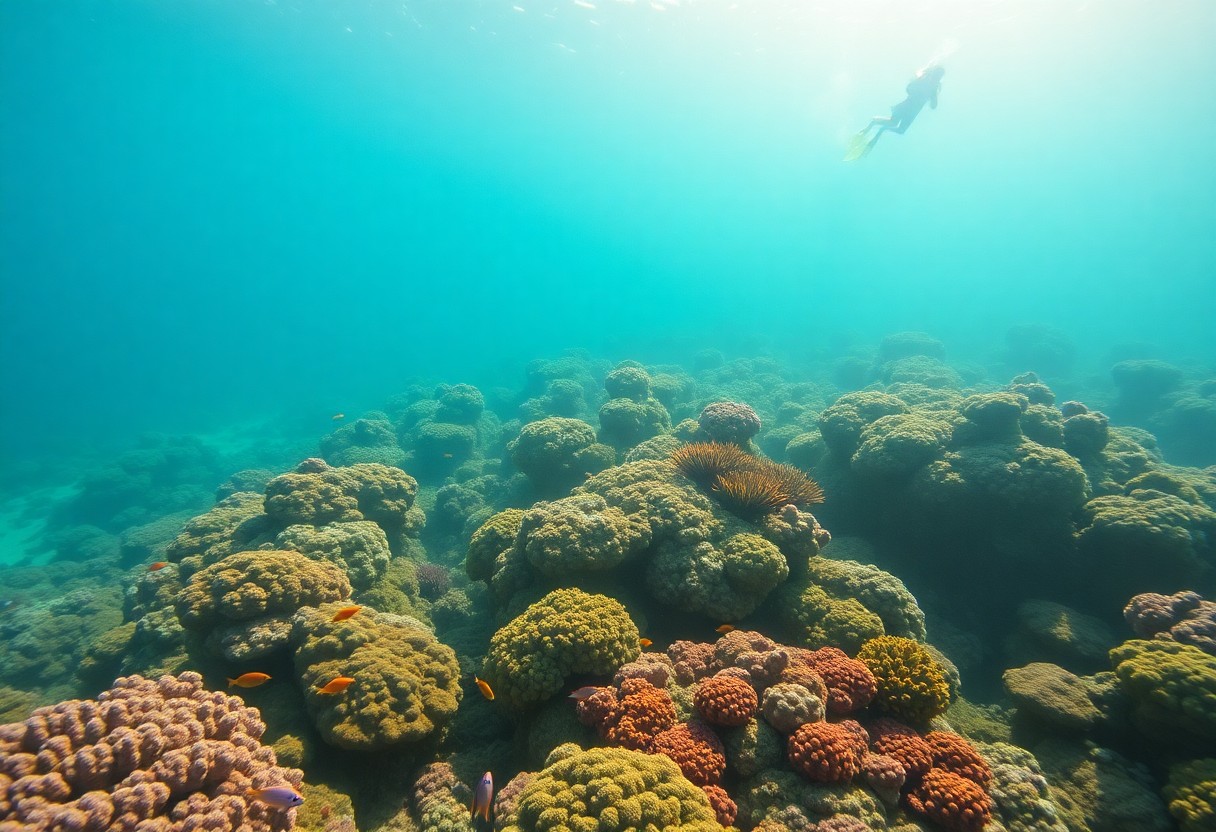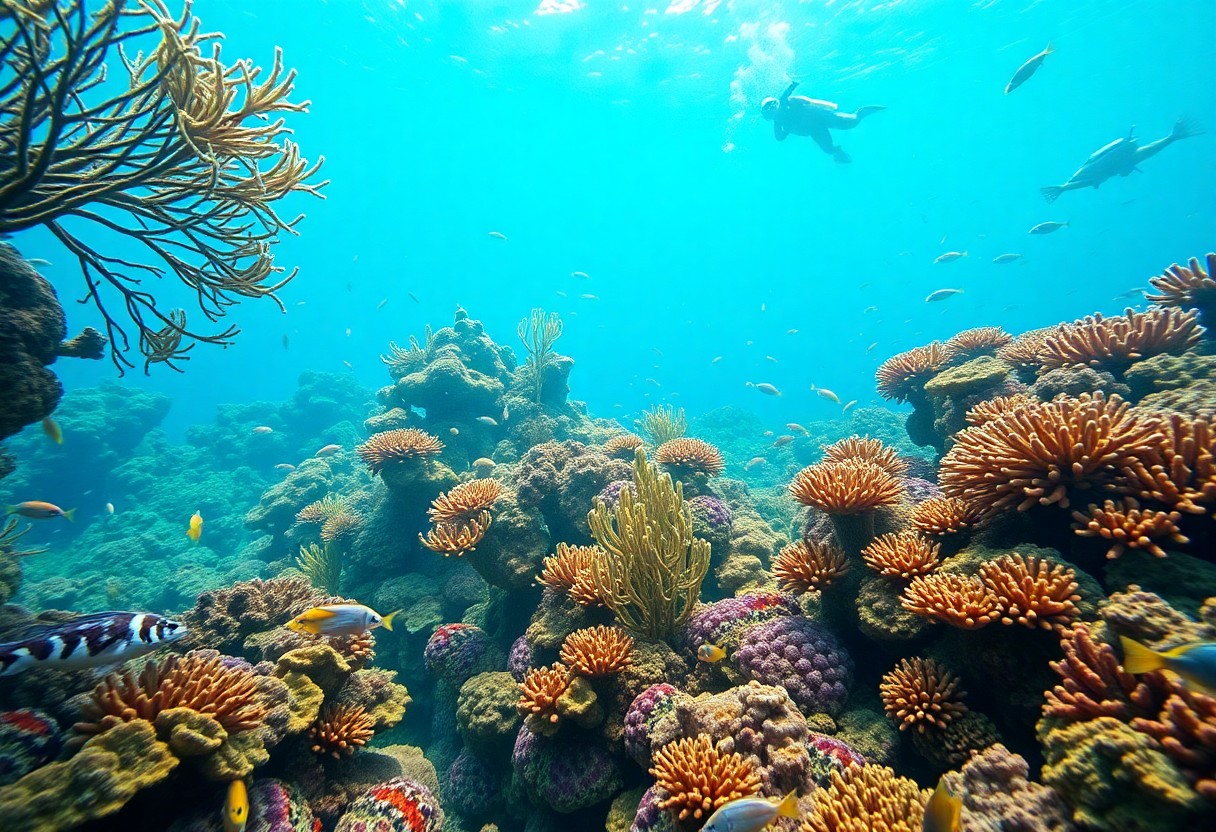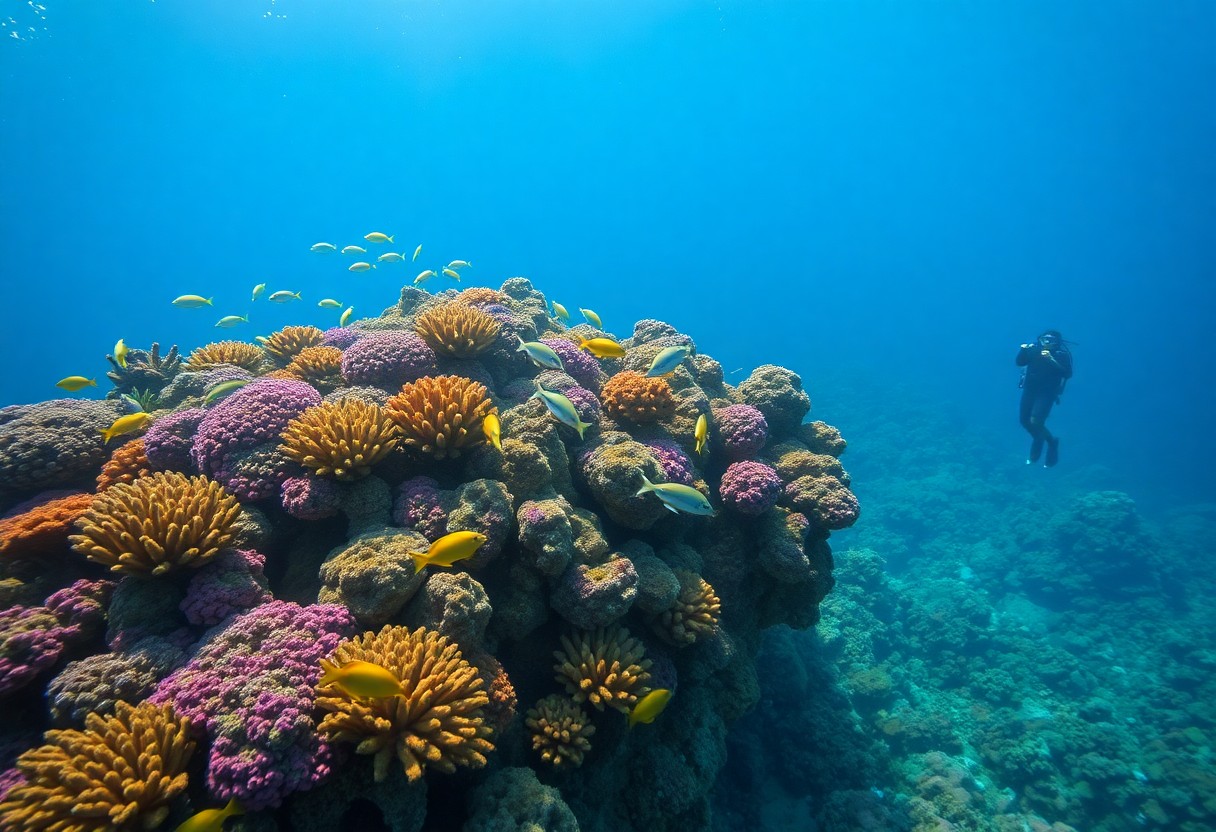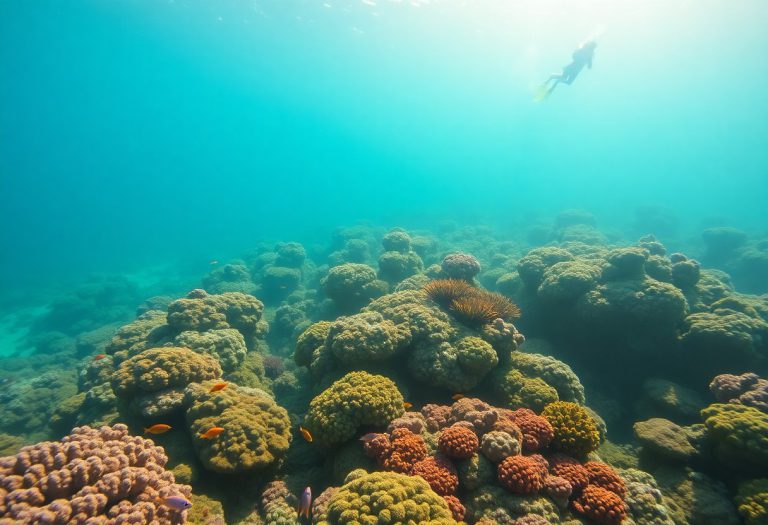While the Great Barrier Reef is frequently regarded as the premier destination for diving enthusiasts, Belize’s barrier reef provides even more awe-inspiring marine adventures. Embarking on a diving expedition in Belize allows you to immerse yourself in a realm of untouched coral reefs and thrilling encounters with a variety of marine species, including nurse sharks and loggerhead turtles. A standout highlight of your journey will be diving into the famous Great Blue Hole, an extraordinary underwater sinkhole that plunges an impressive 410 feet deep and is even visible from space. Additionally, you’ll have the chance to explore the vibrant coral nurseries, which exemplify Belize’s commitment to effective conservation efforts. The crystal-clear waters, combined with fewer crowds, ensure superior visibility and a more personalized diving experience than the bustling sites in Australia, making Belize the ultimate choice for your next underwater escapade.

In-Depth Comparison of Top Diving Destinations: Belize vs. Great Barrier Reef
For those caught between these two renowned diving locations, here’s a detailed comparison that highlights their key features and unique characteristics:
Exploring the Diverse Marine Life of Belize
Diving in Belize offers the chance to encounter over 500 unique fish species and 70 types of hard coral, making each dive an exhilarating experience. You can expect to see nurse sharks, loggerhead turtles, and even the elusive blue lobster. The relatively compact nature of Belize’s reef is beneficial, as it concentrates marine life into easily accessible areas, allowing for frequent and memorable encounters during your underwater explorations. This rich biodiversity makes Belize a standout destination for divers seeking thrilling wildlife interactions.
Enhancing Your Diving Experience with Optimal Conditions
Belize clearly provides more reliable diving conditions throughout the year. With stable water temperatures and excellent visibility, planning your dives becomes straightforward, leading to an enhanced overall experience. Unlike the seasonal challenges often faced at the Great Barrier Reef, divers in Belize can look forward to fewer disruptions caused by unpredictable weather patterns. Additionally, Belize enjoys protection from strong ocean currents, resulting in calmer waters that not only enhance the enjoyment of your dives but also contribute to a safer diving environment. Shorter boat rides to dive sites maximize your time exploring the underwater wonders instead of spending it traveling.

Practical Tips for an Unforgettable Diving Experience in Belize
Diving in Belize involves more than merely entering the water; your safety gear and certification requirements must be thoroughly assessed before beginning any dive.
- Ensure your dive insurance is adequate
- Bring your own dive computer for accurate monitoring
- Use reef-safe sunscreen to protect delicate marine ecosystems
- Carry a surface marker buoy for added safety
During peak diving seasons, it’s advisable to book your dives at least 24 hours in advance to secure your preferred time slots and avoid disappointment.
Optimal Seasons for Unforgettable Diving Adventures
For the best diving conditions, consider planning your visit between March and June. During this time frame, you can expect water temperatures around 27-29°C (80-84°F) and visibility extending up to 30 meters (100 feet). These months provide a perfect blend of favorable weather and vibrant marine life activity, allowing you to fully immerse yourself in the underwater wonders of Belize.
Selecting the Perfect Dive Site Based on Your Skill Level
For those diving in Belize for the first time, starting at Hol Chan Marine Reserve or Shark Ray Alley is highly recommended. These locations are renowned for their excellent visibility and abundant marine life, making them ideal for both beginners and seasoned divers alike.
To further enhance your diving journey, consider that Lighthouse Reef Atoll offers thrilling challenges for advanced divers, while Turneffe Atoll provides calmer and more sheltered conditions. Choose your dive locations based on your certification level and personal experience. Always remember to avoid diving alone and check local weather conditions prior to your dive.
Step-by-Step Approach to Planning Your Belize Diving Trip
To effectively organize your diving adventure in Belize, several important steps should be followed. It’s advisable to start your planning process at least three months before your trip to ensure you secure the best diving locations and optimal accommodation options in popular areas such as Placencia or Hopkins Village.
| 3 months before | Book flights and accommodation |
| 2 months before | Reserve diving packages |
| 1 month before | Obtain diving insurance and complete a medical check-up |
Preparing for Your Dive Adventure in Belize
One crucial step is to obtain your diving certification if you haven’t already done so. Most dive sites in Belize require you to have a PADI Open Water certification. As you prepare your gear, ensure that your BCD, regulator, and mask fit properly. Additionally, medical clearance is essential for diving at the Blue Hole to ensure your safety and readiness.
Logistical Arrangements for a Seamless Diving Experience
Next, focus on practical arrangements. It’s vital to book your dive operator in advance, especially during the peak tourist season from November to April. Your diving package should encompass equipment rental, boat transfers, and safety briefings to ensure you are thoroughly prepared.
A well-structured diving itinerary should include backup dates for your dives to accommodate potential weather-related delays. Schedule your dives early in your trip to allow for flexibility in case of changes. Ideally, your accommodation should be located within a 30-minute radius of the dive center, and reliable transportation should be arranged to guarantee timely arrival at the departure point.
Key Components for a Successful Diving Experience
Unlike the Great Barrier Reef, Belize offers an exceptional blend of easy access and rich marine biodiversity. Your diving experience is enhanced by:
- Fewer crowds at dive sites
- Warm water temperatures available throughout the year
- Clear visibility that can reach up to 30 meters
- Over 500 species of colorful tropical fish
This remarkable combination creates an ideal diving environment for both novice and experienced divers alike, ensuring everyone can enjoy the beauty beneath the waves.
Prioritizing Safety While Diving in Belize
One of the most important aspects of your diving experience in Belize is selecting professional dive operators who adhere to rigorous safety protocols. Expect well-maintained equipment, PADI-certified instructors, and comprehensive briefings before each dive. Your safety is further supported by nearby decompression facilities and reliable emergency response systems that provide peace of mind during your underwater explorations.
Commitment to Environmental Conservation in Belize
Practicing sustainable diving in Belize is essential, and it’s crucial to follow reef protection guidelines. This includes maintaining proper buoyancy, avoiding direct contact with coral, and respecting the habitats of marine life. Local dive centers are actively involved in coral preservation initiatives, which are vital for maintaining the health of the reef.
Moreover, you can participate in reef conservation programs during your stay, where you’ll learn about the importance of protecting marine ecosystems. Your diving activities also contribute to local environmental efforts through park fees that support reef restoration initiatives and marine research projects, ensuring that future generations can enjoy Belize’s underwater treasures.

Evaluating the Advantages and Disadvantages of Each Diving Destination
Every diving destination possesses unique features, but Belize stands out with distinct advantages over the Great Barrier Reef. Your decision between these two locations will hinge on several key factors, including accessibility, marine life diversity, and overall diving conditions.
| Belize | Great Barrier Reef |
| Less crowded dive sites | Often overcrowded with tourists |
| Greater diversity of marine life sightings | Coral bleaching affecting many areas |
| Improved visibility (up to 30m) | Inconsistent visibility (5-15m) |
| More affordable diving packages | Higher costs for diving experiences |
| Shorter travel time from the US | Long-haul flights often required |
Advantages of Diving in Belize
As you explore Belize’s captivating underwater landscapes, you’ll encounter incredible marine biodiversity. Your diving experiences will include close encounters with nurse sharks, loggerhead turtles, and stunning coral formations. The water temperature remains comfortably warm throughout the year, and many dive sites are conveniently reachable within 30 minutes from the shore, significantly enhancing your overall diving experience.
Challenges to Consider When Diving in Belize
Despite its many advantages, Belize does present some challenges to be mindful of. Your diving experience may be influenced by seasonal weather patterns, particularly during hurricane season from June to November. Some more remote dive sites may necessitate longer boat rides, which can detract from your time spent underwater.
Additionally, various factors could affect your diving experience. You’ll want to plan around peak tourist seasons to avoid crowds at popular dive spots such as the Great Blue Hole. Moreover, if you opt for specialized trips to more remote locations, your diving costs may increase accordingly, so budgeting is key.
Essential Insights for Your Diving Adventure
With this comprehensive information at your disposal, your choice for an unforgettable diving experience should be clearer. Belize not only offers more accessible encounters with a variety of marine life but also boasts healthier coral ecosystems compared to the Great Barrier Reef. You will experience calm waters and excellent visibility during your diving excursions in Belize, making it an outstanding destination for divers of all skill levels. While it is crucial to stay informed about basic diving safety practices, you’ll find that Belize’s waters provide a more controlled environment for exploring the depths. With average water temperatures around 27°C (82°F) year-round and visibility frequently exceeding 30 meters, your diving adventure in Belize is destined to surpass your expectations.
Frequently Asked Questions About Diving in Belize
Q: Why is Belize a superior choice for marine life sightings compared to the Great Barrier Reef?
A: Belize’s barrier reef features more active marine life within shorter dive durations. Divers often encounter nurse sharks, loggerhead turtles, lionfish, groupers, and blue lobsters in a single dive. In contrast, the Great Barrier Reef typically requires multiple dives over several days to observe similar marine species, and the effects of climate change have significantly impacted its coral diversity.
Q: How does accessibility differ between the diving locations in Belize and the Great Barrier Reef?
A: Belize’s diving sites, such as Silk Caye, are in close proximity to the mainland, allowing for quick boat access and shorter travel times. Conversely, the Great Barrier Reef requires extended boat trips, usually necessitating multi-day excursions from ports like Cairns. The calmer waters in Belize also make diving easier for beginners compared to the often choppy conditions at the Great Barrier Reef.
Q: What conservation initiatives make Belize’s reef ecosystem stand out?
A: Belize is home to active coral restoration programs like Fragments of Hope, which establish coral nurseries near Placencia. Visitors can observe these conservation efforts firsthand while diving or snorkeling. The Belize Barrier Reef Reserve System is recognized as a UNESCO World Heritage site and remains one of the most vibrant reef ecosystems globally, showcasing the tangible benefits of its protective measures.
The Article Why Belize Outshines the Great Barrier Reef for Scuba Diving Adventures appeared first on Belize Travel Guide
The Article Belize: The Ultimate Destination for Scuba Diving Adventures Was Found On https://limitsofstrategy.com
References:
Belize: The Ultimate Destination for Scuba Diving Adventures





I really appreciate your take on Belize’s barrier reef! I had the chance to dive there last year, and it was incredible how different the experience felt compared to the Great Barrier Reef. The marine biodiversity was truly breathtaking, especially the vibrant coral nurseries you mentioned. It made me think about the importance of conservation and how local efforts can have a big impact on protecting these ecosystems.
Your experience diving in Belize sounds fantastic and highlights a key aspect of why these coral ecosystems are so special. The comparison you drew between Belize’s barrier reef and the Great Barrier Reef reflects a fascinating reality in marine environments: they may both be stunning, but they often present unique characteristics that shape how we experience them. The vibrant coral nurseries you encountered are a testament to the region’s focus on nurturing and restoring these critical habitats.
It’s fascinating to hear about your diving experience in Belize. The contrast between the Belize Barrier Reef and the Great Barrier Reef really highlights how unique marine ecosystems can be. Belize’s coral nurseries are especially remarkable; they serve as vital habitats for countless marine species. It’s encouraging that you noticed the significance of local conservation efforts.
It’s true, the contrast between the Belize Barrier Reef and the Great Barrier Reef is really striking. Each has its own charm and challenges, which makes exploring both so rewarding. When I was diving in Belize, I was really struck by the vibrant colors and the density of marine life—not just the fish, but also the various coral formations that seemed to tell stories of resilience.
You really captured the essence of what makes both reefs special. The biodiversity in Belize is something else, isn’t it? When I was diving there, I remember being mesmerized by those coral formations, too. Each little nook and cranny seems to harbor its own unique world, almost like underwater neighborhoods filled with life.
It’s great to hear about your dive in Belize! The colors and diversity there truly do have a unique way of captivating you, don’t they? The Belize Barrier Reef feels like a living tapestry, with each coral formation showcasing its own story of resilience against challenges like climate change and bleaching.
You’ve captured something really special about diving in Belize. The vibrancy of the colors and the diversity in marine life create an experience that feels almost alive, doesn’t it? Each dive feels like stepping into an intricate world where every coral formation has its own story, shaped by countless years of resilience. It’s fascinating how those underwater landscapes reflect not just beauty but also the challenges that come with climate change and environmental pressures.
It’s interesting you mention the Belize Barrier Reef’s coral nurseries. Experiencing them firsthand was eye-opening. The way those nurseries are nurtured to support coral recovery makes me think about how interconnected our ecosystems are. It’s not just about preserving beauty; it’s crucial for our oceans’ health and, by extension, our climate.
It’s great to hear that you had such an eye-opening experience at the coral nurseries. They really are a testament to the resilience of nature and the efforts being made to help it thrive. You hit the nail on the head with the interconnectedness of our ecosystems. When we talk about coral recovery, it’s about more than just the reefs; it affects marine biodiversity, coastal protection, and even local communities. The health of our oceans truly has a ripple effect—climate change, fisheries, and even weather patterns all tie back to marine ecosystems. It’s fascinating how everything is interconnected, isn’t it? What surprised you most about the nurseries?
It’s great to hear that you had a firsthand experience with the coral nurseries. Those environments really highlight the delicate balance of marine ecosystems. Often, people view coral reefs solely through the lens of their beauty, but the health of our oceans and climate is intricately linked to their survival.
It’s interesting how different marine ecosystems can feel even though they’re both incredible in their own ways. Diving in Belize’s barrier reef sounds like such a transformative experience. I remember hearing about the ongoing conservation efforts there, especially initiatives focused on coral nurseries. It’s heartening to see how local communities are coming together to protect their environment.
It’s really inspiring to see how these two worlds—marine ecosystems and community efforts—intertwine. Diving in Belize’s barrier reef offers a unique look at the vibrant life thriving beneath the surface, and it’s hard to ignore how the health of that ecosystem is tied to the local communities. The work being done with coral nurseries is crucial. It’s not just about preserving what we have; it’s about restoring and reviving these areas for future generations.
It’s fascinating to hear about your diving experience in Belize! The way the coral nurseries thrive in such vivid colors really does create a unique underwater atmosphere. You’re right to point out the differences between Belize’s barrier reef and the Great Barrier Reef. While both are stunning, each has its unique set of challenges and surroundings that can greatly influence our observations and experiences.
It’s great to hear you had an amazing experience diving in Belize! The contrast between Belize’s barrier reef and the Great Barrier Reef is really striking. Each has its own unique charm and ecosystem, right? The marine biodiversity you mentioned is definitely something special; the vibrant coral nurseries there really stand out.
It’s really cool to hear about your diving experience in Belize! The difference between the barrier reefs can be pretty striking. Belize’s reef has this unique character that feels almost more intimate compared to the Great Barrier Reef. The vibrant coral nurseries you’re talking about are such a vital part of the ecosystem. They’re like the nurseries of the ocean, where life begins and thrives. It’s a bit of a sobering thought, though, because these beautiful coral systems are fragile.
It’s interesting how diving experiences can differ so much, isn’t it? The distinction you’ve noticed between Belize’s barrier reef and the Great Barrier Reef really highlights the unique character of each ecosystem. The vibrancy of Belize’s coral nurseries is certainly a testament to the local conservation efforts.
Your exploration of Belize’s barrier reef as a premier diving destination really resonates with me. I’ve had the chance to experience diving in a few notable places, but the idea of immersing myself in Belize’s unique marine environment, particularly the Great Blue Hole, makes it all the more appealing. It’s fascinating to think about how environments like this can simultaneously offer thrilling adventures and serve as crucial habitats for diverse marine species.